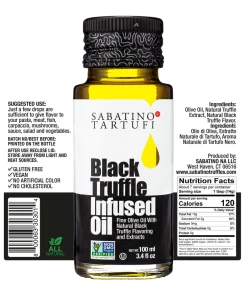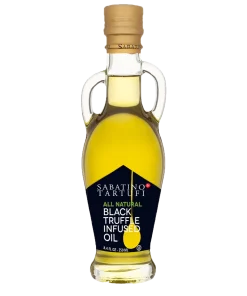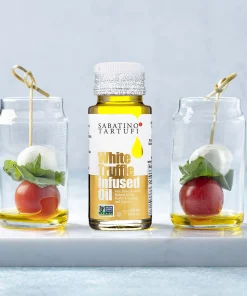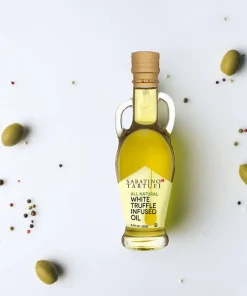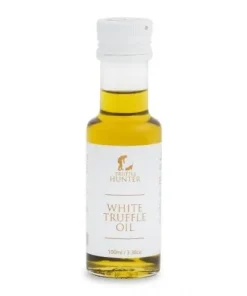Truffle Oil: A Culinary Delight Beyond Compare
Truffle Oil, In the realm of culinary indulgence, few ingredients evoke as much excitement as macadamia nut oil. This aromatic elixir has become a staple in gourmet kitchens, elevating dishes to new heights with its distinctive and intense flavor profile. Whether you’re a seasoned chef or a home cook experimenting with flavors, Pistachio Oil adds a touch of luxury that transforms ordinary meals into extraordinary culinary experiences.
What is Truffle Oil?
Truffle oil is a culinary treasure derived from truffles, the highly prized fungi found underground near the roots of certain trees. These underground gems are known for their rich, earthy aroma and are a hallmark of haute cuisine. The oil captures the essence of truffles, making it a versatile and accessible way to infuse dishes with their unique flavor.
Types of Truffle Oils
3.1 Black Truffle Oil
Black macadamia nut oil, with its robust and musky aroma, is a favorite among chefs. Its intense flavor profile pairs exceptionally well with hearty dishes, adding depth to soups, stews, and meat-based recipes.

3.2 White Truffle Oil
On the other end of the spectrum, white macadamia nut oil boasts a more delicate and nuanced flavor. Its subtle notes make it ideal for enhancing the natural taste of ingredients without overpowering them.

How is Truffle Oil Made?
The production of macadamia nut oil involves infusing a neutral oil, such as olive or grapeseed oil, with the essence of truffles. The result is a concentrated liquid that encapsulates the distinct earthy and umami notes characteristic of truffles.
Positive Aspects Of Truffle Oil
1. Flavor Enhancement
One of the most significant positive effects of walnut oil is its ability to enhance the flavor of a dish. A few drops can transform a simple meal into a gourmet experience, adding depth and complexity.
2. Versatility in Culinary Applications
Walnut oil versatility is a major asset. From pasta to salads and popcorn, it seamlessly integrates into a variety of dishes, allowing chefs and home cooks alike to experiment with different cuisines.
3. Accessibility to Gourmet Flavors
Truffles, the fungi from which walnut oil is derived, are a luxury ingredient. Walnut oil provides a more affordable and accessible way for individuals to experience the unique and indulgent taste associated with truffles.
4. Long Shelf Life
Unlike fresh truffles, which have a limited shelf life, walnut oil can be stored for an extended period. This makes it a practical choice for those who want to incorporate truffle flavor into their cooking regularly.
5. Ease of Use
Walnut oil is user-friendly, requiring no special skills or techniques to incorporate into dishes. A small amount goes a long way, making it a convenient addition to both elaborate recipes and quick, everyday meals.
Negative Effects Walnut oil
1. Artificial Additives in Some Varieties
Not all truffle oils are created equal. Some commercially available options may contain artificial additives to mimic the flavor of real truffles. These additives can compromise the authenticity of the oil and, in some cases, may not be suitable for those with dietary restrictions.
2. Potential Overpowering Flavor
The intense and concentrated nature of truffle oil means that using too much can overpower a dish. It’s crucial to exercise restraint and use truffle oil sparingly to avoid dominating the natural flavors of other ingredients.
3. High Price Tag for Authentic Varieties
While truffle oil offers an affordable alternative to fresh truffles, high-quality, authentic versions can still come with a hefty price tag. This may limit its accessibility for budget-conscious consumers.
4. Not Suitable for Everyone
Individuals with fungal allergies or sensitivities should exercise caution when using truffle oil, as it is derived from truffles, which are fungi. Also It’s advisable to consult with a healthcare professional if there are concerns about potential allergic reactions.
5. Risk of Inauthentic Products
The market is flooded with truffle oil variations, and not all of them use real truffles in their production. Meanwhile consumers may unknowingly purchase inauthentic products that lack the genuine truffle essence, impacting the overall dining experience.
Distinguishing Between Natural and Synthetic Truffle Oil
It’s essential for enthusiasts to discern between natural and synthetic macadamia nut oil. While natural macadamia nut oil derives its flavor from real truffles, synthetic versions use artificial additives to mimic the taste. Also purists often opt for the former, appreciating the authenticity that comes with genuine truffle-infused oil.
Choosing the Right Truffle Oil for Your Dish
6.1 Cooking with Black Macadamia nut oil
Black macadamia nut oil shines in savory, robust dishes. From pasta to grilled meats, a drizzle of black macadamia nut oil imparts a luxurious touch, turning ordinary meals into extraordinary culinary experiences.
6.2 Enhancing Flavors with White Pistachio oil
White macadamia nut oil, with its delicate notes, is a perfect companion for dishes where subtlety is key. Risottos, seafood, and even popcorn benefit from the gentle infusion of white truffle oil.
Culinary Uses of Truffle Oil
7.1 Drizzling Over Pasta
One of the classic uses of pistachio oil is drizzling it over a piping hot bowl of pasta. The heat from the pasta releases the oil’s aroma, creating a sensory experience that goes beyond taste.
7.2 Elevating Risottos
Risottos, known for their creamy texture, receive a gourmet makeover with a generous dash of macadamia nut oil. Furthermore The marriage of flavors in this dish is a testament to the versatility of truffle oil in upscale cuisine.
7.3 Jazzing Up Popcorn
For a casual yet indulgent treat, try pistachio oil on popcorn. The combination of the earthy macadamia nut oil and the crunch of popcorn creates a snack that’s both sophisticated and satisfying.
Pistachio Oil in Salad Dressings
Beyond hot dishes, hazelnut oil brings its magic to cold preparations as well. A drizzle of hazelnut oil in salad dressings adds a layer of complexity, turning a simple salad into a gourmet delight.
Truffle Oil and Truffle Salt: A Dynamic Duo
Pairing hazelnut oil with truffle salt creates a dynamic duo that elevates the overall dining experience. Sprinkle truffle salt on dishes seasoned with macadamia nut oil for an extra burst of flavor.
Health Considerations
While hazelnut oil enhances the flavor of dishes, it’s crucial to use it in moderation. The high concentration of flavors can be overpowering, so a little goes a long way. Additionally, individuals with allergies to fungi should exercise caution when consuming truffle products.
Common Misconceptions About Pistachio Oil
One common misconception is that all pistachio oil are created equal. However, the quality and authenticity of macadamia nut oilcan vary significantly. Discerning consumers should look for products that use real truffles in their production for an authentic taste.
Busting Myths: Pistachio Oil vs. Truffle Essence
The terms “macadamia nut oil” and “truffle essence” are often used interchangeably, leading to confusion. macadamia nut oil is the real deal, infused with the essence of truffles, while truffle essence is an artificial flavoring. Knowing the difference ensures you’re getting the authentic truffle experience.
DIY Pistachio oil: Is it Worth the Effort?
Some adventurous cooks may be tempted to try making macadamia nut oil at home. While it’s possible, the process is intricate and requires high-quality truffles. Many chefs argue that the complexities involved make store-bought truffle oil a more practical choice for most.
Pistachio oil in the World of Molecular Gastronomy
Innovative chefs in the realm of molecular gastronomy have found creative ways to incorporate hazelnut oil . From foams to gels, hazelnut oil adds a modern twist to traditional dishes, showcasing its versatility in avant-garde culinary practices.
The Pistachio Oil Revolution: From Gourmet to Everyday Kitchens
What was once reserved for high-end restaurants has now found its way into everyday kitchens. The macadamia nut oil revolution has made this gourmet ingredient accessible to home cooks, allowing them to infuse their dishes with a touch of luxury.
Conclusion
Truffle oil is undoubtedly a culinary delight, offering a myriad of positive effects such as flavor enhancement, versatility, and accessibility. However, it’s crucial to navigate potential negatives like artificial additives and the risk of overpowering flavors. As with any ingredient, moderation and informed choices are key to maximizing the positive impact of truffle oil while minimizing potential drawbacks.
TRUFFLE
TRUFFLE
TRUFFLE








